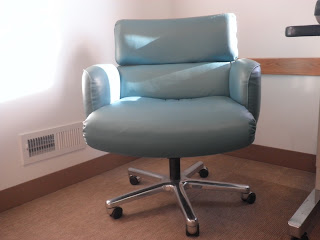
Upon first entering David Zink Yi's exhibition at Midway Contemporary Art, viewers are accosted with a ceramic giant squid lying defeated on the floor. Its deflated eyes are covered with a lead and copper glaze that give them the accurate appearance of a decomposing eyeball. And once the 16-foot monster has finally registered, the feeling of awe is replaced with shame.
The title of the exhibition, Horror Vacui, translates to a fear of emptiness. This emptiness takes on many forms for David Zink Yi, the empty gaze of a rotting ceramic squid, the horrible tendrils of a tree reaching out of an endless void, the room where he shows two videos, simultaneously and in complete darkness. Each "emptiness" is completely different, yet they all evoke fear or unease in participants.
From a distance, the photos mounted on the walls facing the squid's carcass appear to be black and white prints. As the viewer steps closer, vivid greens are revealed within the needles on the branches. A feeling of unease creeps through the viewer as they begin to realize that the background of each photograph is a vacuous black, sucking any hues into its gaping maw and out of sight. The photos are brimming with tree branches reaching every which way, yet they feel so empty. These photos are of a tree in mourning, reaching for a fallen giant, cruelly put on display and given no respect. At this point, viewers see why they have felt shame for staring intently at a ceramic giant squid lying in a puddle of black, cracked corn syrup, it's dead. People are standing around it and speculating on what went into the creation of this piece, how it was installed and what it means, overlooking the argument they are proving: people are losing their respect for the dead, they are becoming desensitized to death and violence.
After leaving the squid, participants enter a room through a glass door, into complete darkness. Three benches are placed along the walls of an L-shaped room, situated in such a way that onlookers can only view one of the two videos comfortably from any given seat. The fear of this dark room is overwhelming, people could come into contact with anything in this uncontrolled environment. Anyone could trip over a purse or brush against another person's thigh, and this possibility, in a dark and empty room lit only by flickering projections, is terrifying. It is to orient oneself to view both videos equally (the video and audio from both recordings are lined up, but cut in and out, sometimes overlapping.) In addition to disorientation, the emptiness of the room leaves participants vulnerable.
This exhibition as a whole was created not to portray a fear of emptiness, but the fear in emptiness.













































